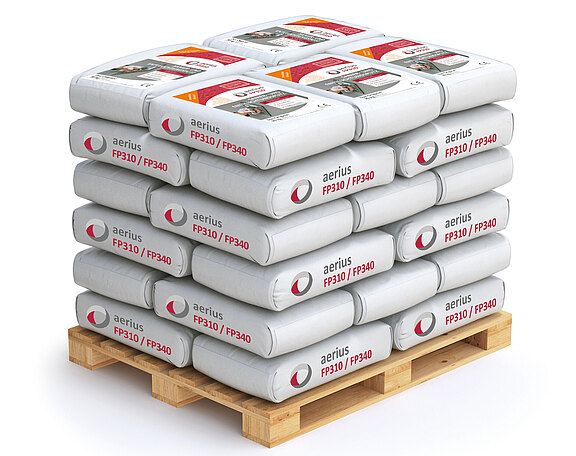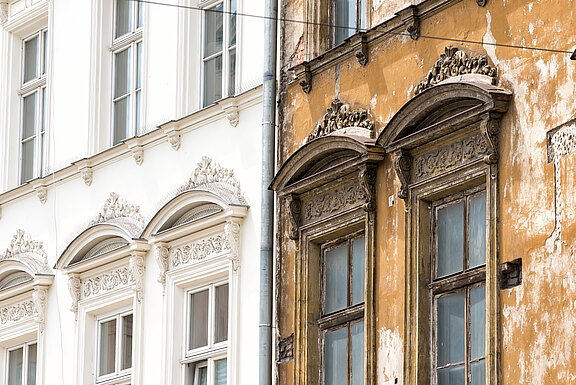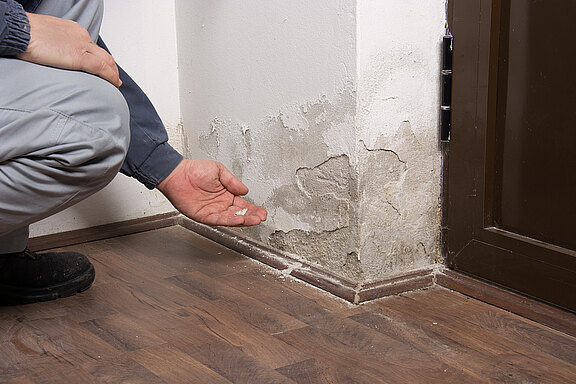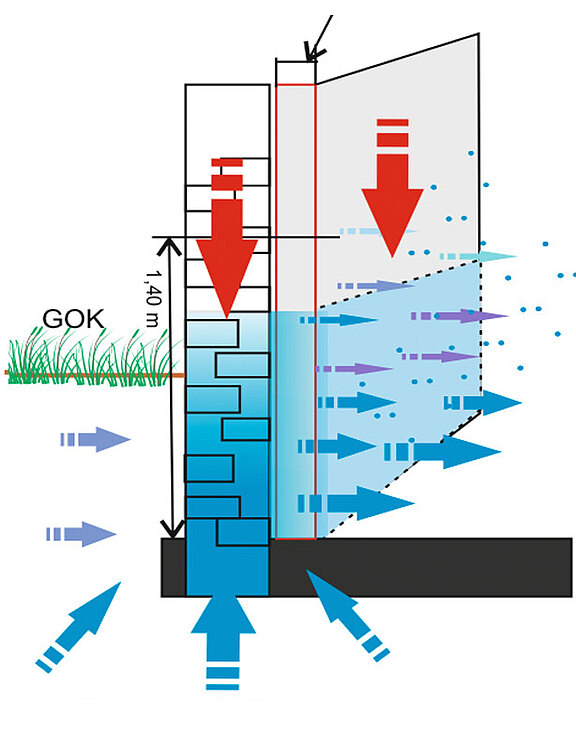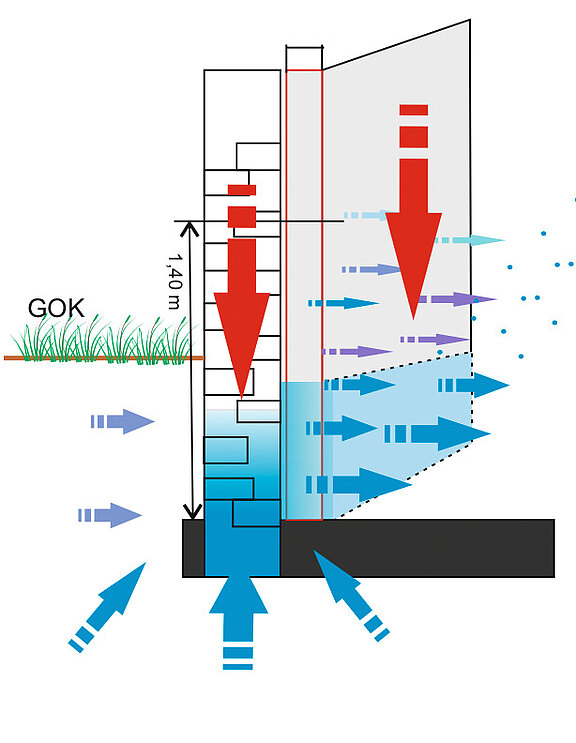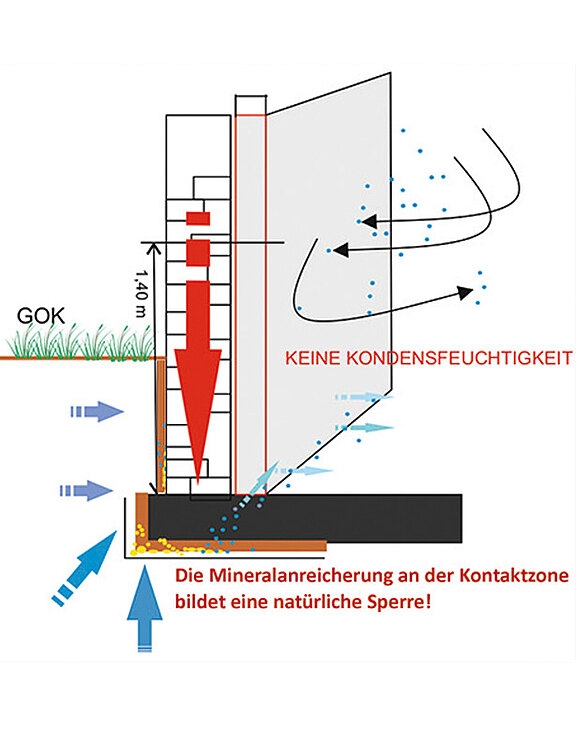Biological and healthy
Whether dehumidifying masonry or renovating plinths: IBT's dehumidification systems remove moisture through the masonry. Special IBT technology creates a unique pore system during mixing, which draws the wall dry through the physical process of capillary action. The evaporation rate is always higher than the moisture that follows. Repetition of these cycles leads to an accumulation of all minerals in the foundation, which permanently closes the access routes into the pore systems.
The result is dry structures, from the cellar to the roof!
For all damp areas
The majority of the salt load remains inactive in the dried masonry and cannot cause any further damage. The amount of salt that has already entered the plaster is minimal. The stable render structures and pore systems manage these stocks and suppress further crystallisation (anions always present).
No further destruction by salts or moisture.
Cosy indoor climate
Once the dehumidification process has been completed, the plaster takes over the vapour regulation in the interior and highly diffusion-open final coats support this effect permanently. This prevents condensation from forming. Due to the high proportion of spherical pores, the aerius plaster system is also highly heat and sound insulating (high porosity/closed spherical pores).
Simple technology instead of fighting water
The diffusion-open microporous structure quickly draws moisture from the substrate (capillary suction). Absorbed moisture in liquid form is distributed in the capillary pores over the entire plaster surface, converted into water vapour in the middle and final layers of plaster and evaporates on the specifically enlarged surface of the plaster or after application on a highly diffusion-open top coat.
The evaporation rate is always higher than the subsequent moisture. By continuously repeating these cycles - starting in the lowest layers of the wall - a further increase in moisture is prevented. Repeated moisture cycles in the masonry lead to an accumulation of all minerals (salts, lime, etc.) in the foundation/wall area, which increasingly narrow the access routes in the pore systems and over time close them off completely.
A natural barrier is created!


